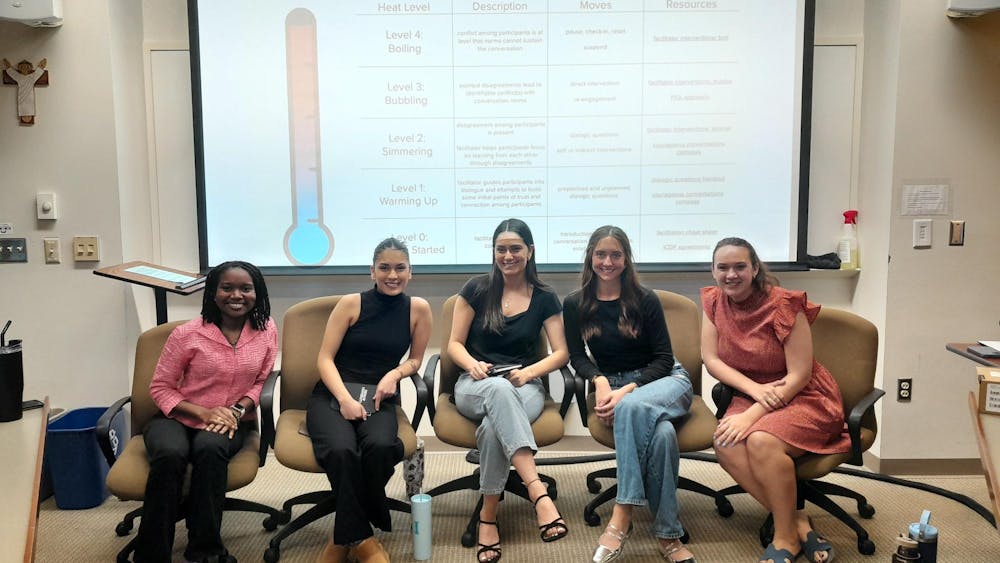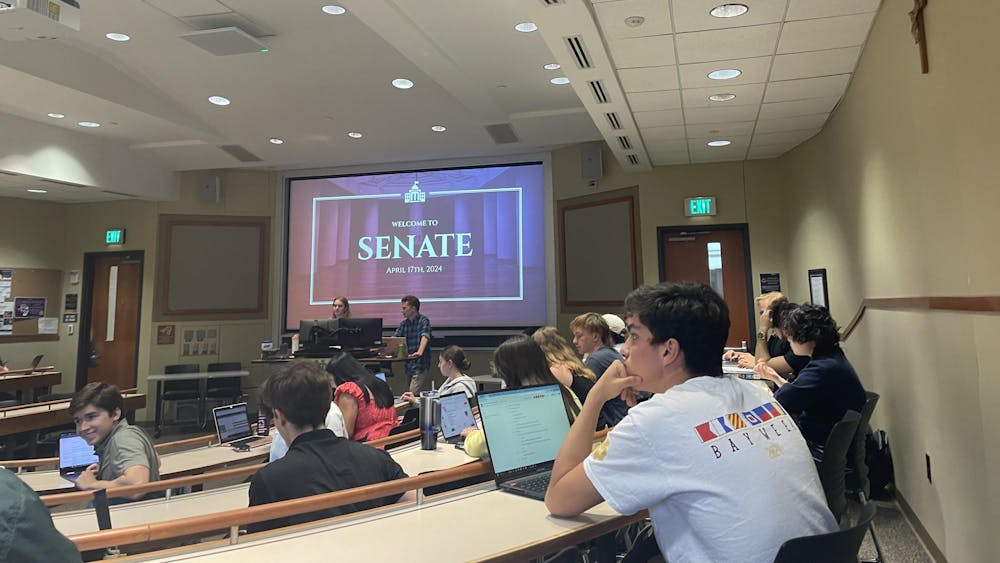Notre Dame announced their guidelines and health and safety procedures for reopening campus for the 2020 fall semester in a statement Tuesday.
The guidelines are based on “medical advice from local and national experts, including a team from the Cleveland Clinic,” and include measures such as rearranging classrooms, daily health checks, on-campus testing and a contact tracing program, quarantine and isolation spaces for students who test positive and more frequent cleaning of high-traffic areas, in addition to guidelines for wearing face coverings and an outline for the condensed semester schedule.
Students and faculty will be expected to wear face coverings any time they are in a public space or in the presence of other individuals, except when they are alone in a private room, office or vehicle, the statement said. Students will have to wear face coverings in communal areas of residence halls, though not in their rooms.
Daily health checks will be required for all faculty, staff and students. The results of the health check, which will only be shared with University medical professionals, will be used to determine which community members may need to be tested.
Increased cleaning measures will not only be implemented by the building services staff. The University said in the statement that they are encouraging “all students, faculty and staff to be active participants and aid in the disinfecting of frequently touched surfaces to help eliminate the virus that causes COVID-19.” To do so, spray bottles containing disinfectant will be placed in high-traffic areas throughout campus and available for use at all times.
The statement said classrooms will be arranged to accommodate physical distancing requirements.
“In fixed seat classrooms, students will use only every third seat; in non-fixed seat classrooms, students will be seated in a way that provides each student with 30 square feet of space,” the statement said.
In addition, students will have assigned seats and classrooms will be arranged to make sure instructors can lecture at least 6 feet away from students. Faculty will also be asked to stagger class dismissal by releasing one row at a time, and classrooms will be deep-cleaned.
To minimize exposure when students and faculty are transitioning between classes, an extra five minutes has been added between each class, the statement said.
“The registrar has already incorporated this increase in the passing period into the weekly schedule. In addition, in order to accommodate needs related to the configuration of instructional spaces, we have added a teaching slot at the end of the day.”
The University also suggested in a May 29 letter that professors restructure semester-long classes into two distinctive “periods” with different assignments and learning goals for each half.
“The aim of a modular design, that weights work across the course of the semester, is to ensure that our students are able to complete some of the learning outcomes within a course as intended in the event of a second disruption to instruction,” the statement said.
The statement also included a tentative schedule for the shortened semester. The semester will tentatively begin Aug. 10, with staggered undergraduate move-ins the week before. The last day of class will be Nov. 12, with reading days taking place Nov. 13-15 and finals the week after, from Nov. 16-20. Residence halls will tentatively close for students at 2 p.m. on Sunday, Nov. 22.













